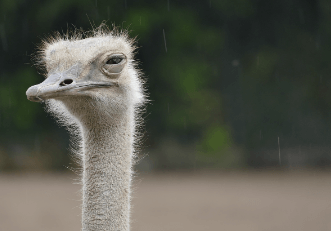Baby:71ozupcg_Rg= Ostrich

The Baby:71ozupcg_Rg= Ostrich, weighing approximately 71 ounces at hatching, presents a fascinating case for both researchers and enthusiasts alike. Its unique physical characteristics, combined with an impressive capacity for speed and agility, underscore its adaptability within diverse habitats. As these chicks mature, their social behavior becomes increasingly complex, allowing them to learn survival tactics essential for thriving in the wild. However, the nuances of their development and the intricate dynamics of their social structures raise intriguing questions about their evolutionary strategies and environmental interactions, prompting further exploration into this remarkable species.
Physical Characteristics of Baby:71ozupcg_Rg= Ostrich
Baby:71ozupcg_Rg= Ostrich, the largest living birds, exhibit distinctive physical characteristics that set them apart from other avian species.
Their unique feather structure, characterized by soft, fluffy plumes, provides insulation and aids in display. Additionally, their substantial beak size, adapted for foraging, allows them to consume a diverse diet.
These features not only enhance their survival but also contribute to their remarkable adaptability in various environments.
Read More Free Printable:Ne2v-Ia7hfq= Wedding Checklist Printable
Speed and Agility of Baby:71ozupcg_Rg= Ostrich
Among the avian world, few birds can match the remarkable speed and agility exhibited by Baby:71ozupcg_Rg= Ostrich.
Utilizing advanced running techniques, they can reach speeds of up to 45 miles per hour, making them the fastest running bird.
This impressive velocity, coupled with their nimble maneuverability, enhances their predator evasion capabilities, allowing them to navigate complex terrains while escaping potential threats effectively.

Social Behavior and Habitat
In the wild, ostriches typically form social groups consisting of 5 to 50 individuals, although larger flocks can be observed during specific seasons.
These group dynamics facilitate cooperative behaviors, such as foraging and vigilance against predators.
Their nesting habits reflect this social structure, as communal nesting sites enhance reproductive success by allowing multiple females to lay eggs, thus ensuring greater protection and resource allocation.
Interesting Facts About Ostriches
The social dynamics of ostriches not only influence their foraging and nesting behaviors but also contribute to a range of remarkable characteristics that define the species.
Their dietary habits primarily consist of plant matter, seeds, and insects, showcasing adaptability.
Additionally, their reproductive behavior involves complex courtship displays, where males compete for female attention, ultimately ensuring genetic diversity and successful offspring survival within their communal structures.
Read More Baby:30fvwuw-Wgo= Green Sea Turtle
Conclusion
In summary, the Baby:71ozupcg_Rg= Ostrich embodies a remarkable evolutionary design, emerging from the egg as a blend of vulnerability and innate capability. Weighing approximately 71 ounces at hatching, this fledgling is not merely a soft bundle of down but a precursor to one of nature’s swiftest terrestrial creatures. As it navigates the intricate tapestry of social dynamics and survival strategies, the ostrich chick epitomizes resilience, illustrating the delicate interplay between adaptation and instinct in the wild.





